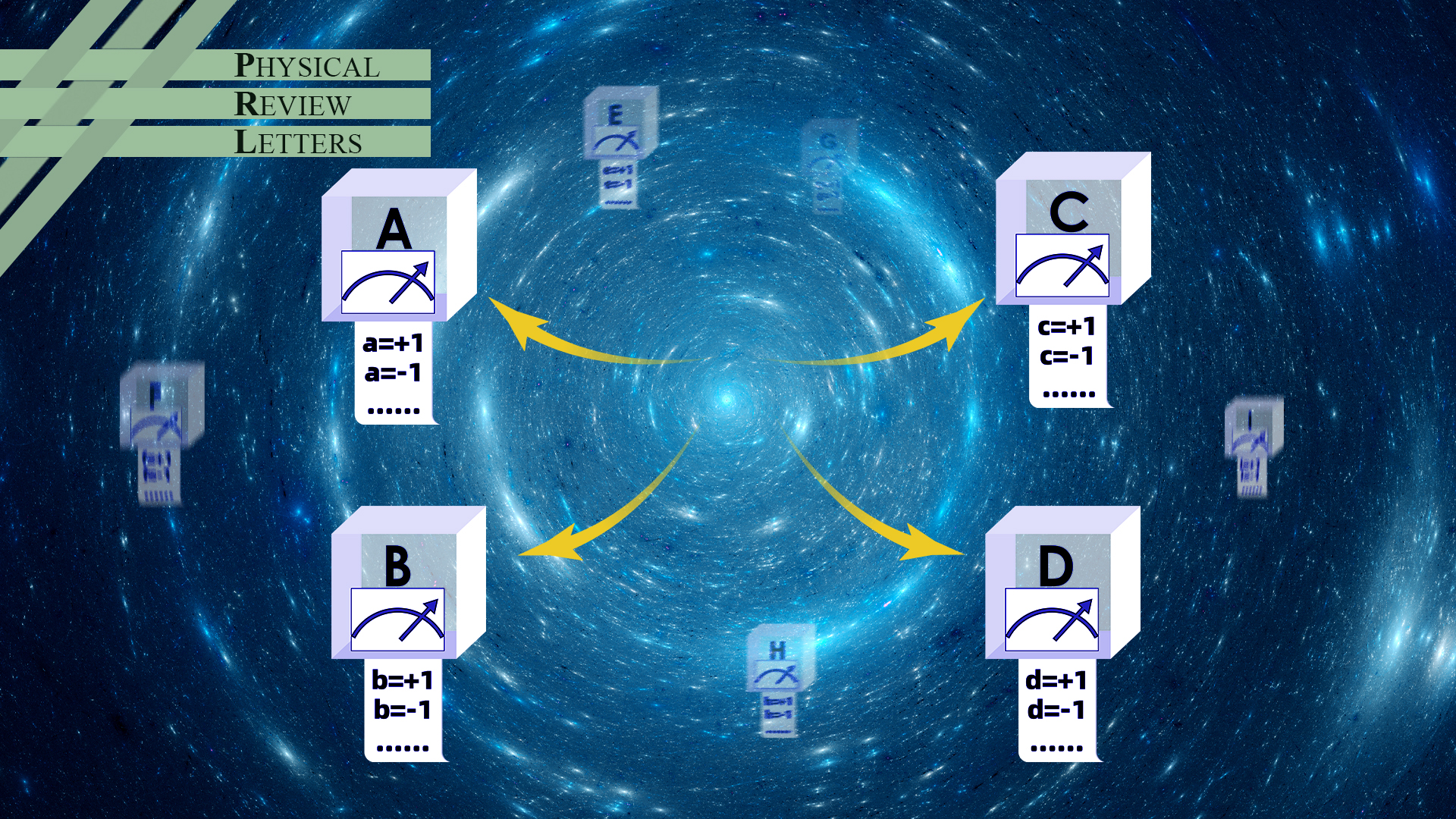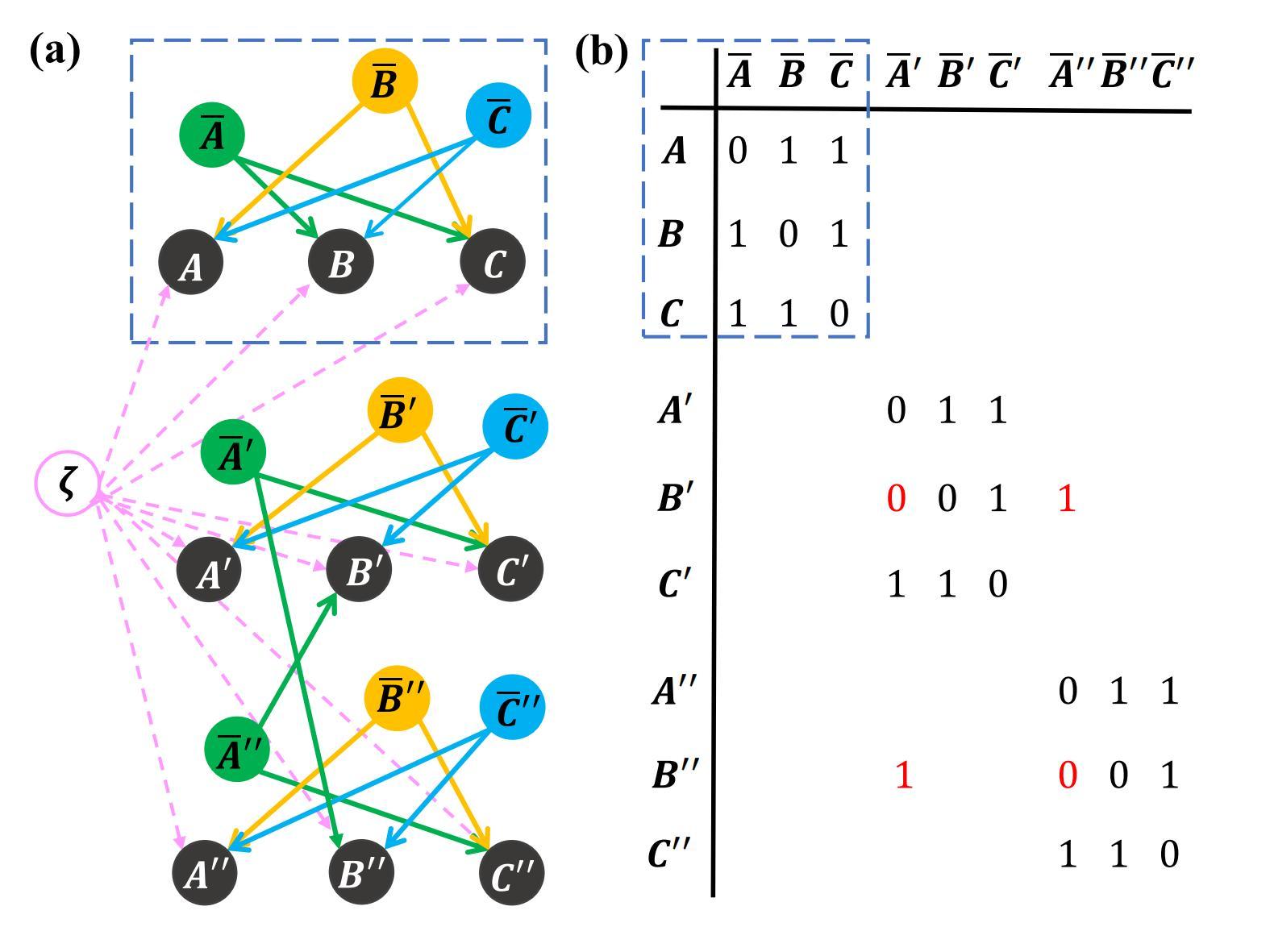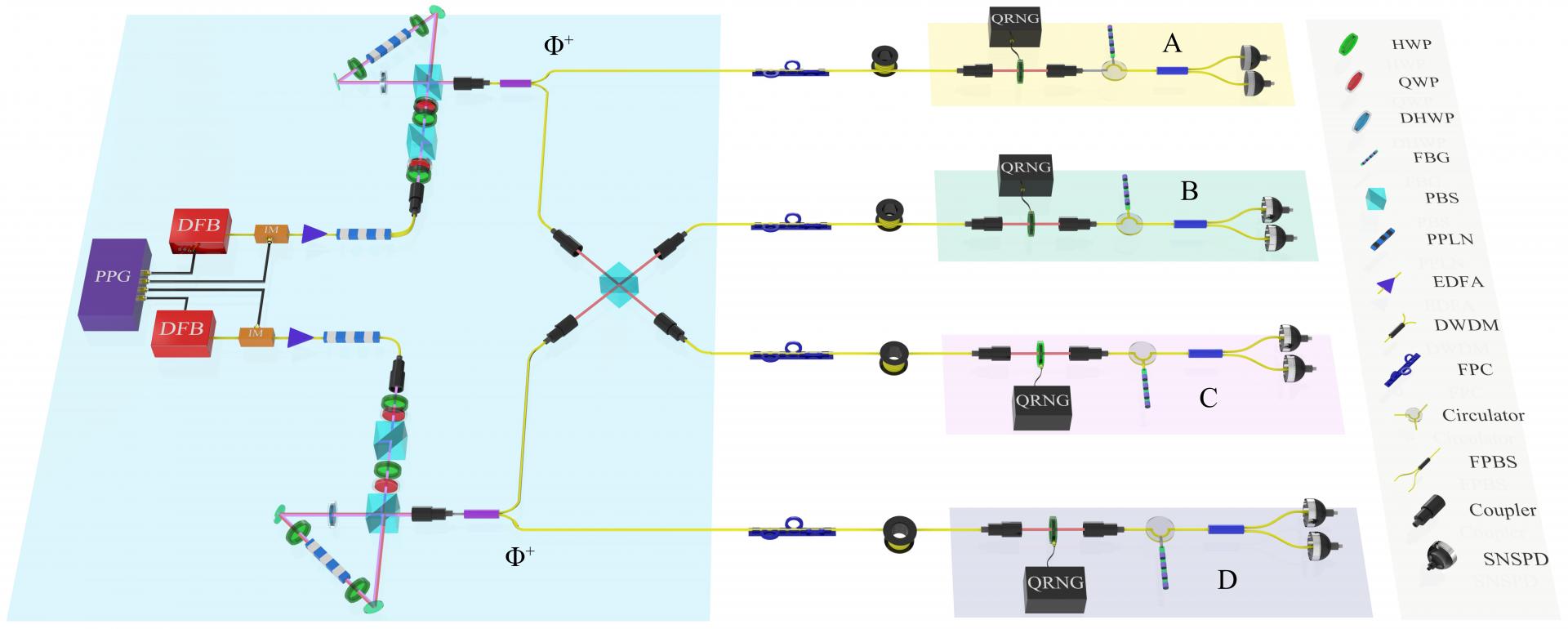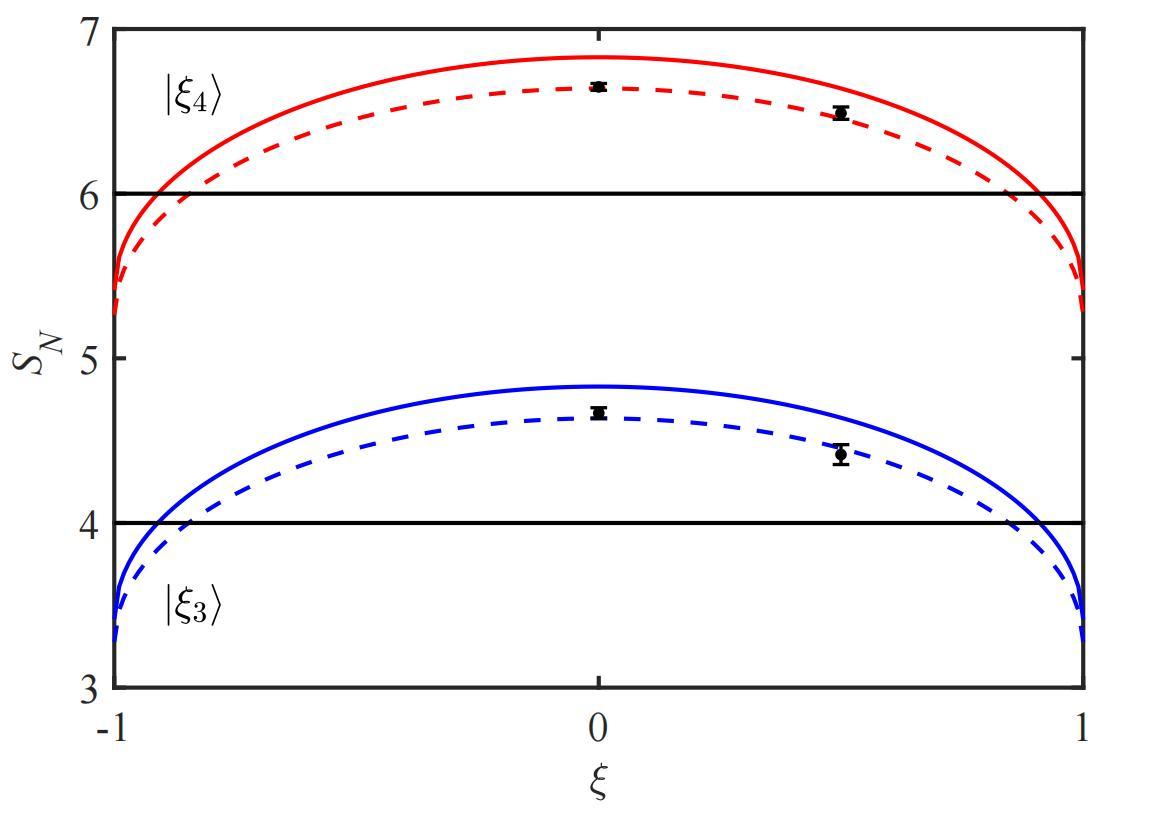Researchers reveal characteristic structure of genuine multipartite nonlocality in quantum network
2022-10-26
Quantum nonlocality is one of the most important properties of quantum physics, which is different from classical physics. It is the basis of modern quantum information processing tasks such as quantum key distribution, quantum random number, distributed quantum computation, and distributed quantum precision measurement.
Nonlocality has been firmly established via the violation of the celebrated Bell Inequality in several experiments with bipartite quantum systems. This has led to critical applications in quantum information science, such as quantum teleportation, quantum key distribution, and quantum randomness. Three of its researchers recently won the 2022 Nobel Prize in physics.

Researchers from the Southern University of Science and Technology (SUSTech), in collaboration with scientists from the University of Science and Technology of China (USTC), have recently made important progress in the study of quantum nonlocality, which reveals the characteristic structure of genuine multipartite nonlocality in a quantum network, and realize the experimental demonstration.
Their related paper, “Test of Genuine Multipartite Nonlocality,” was published in the academic journal Physical Review Letters, a prestigious journal covering all fields of physics.
Understanding the nonlocality of a system with three or more parties is an intriguing question. It may potentially impact a broad range of applications such as multipartite cryptography, quantum computation, correlating articles that never interacted, many-body physics, and quantum networks, which have advanced significantly in the past few years, deepening our understanding of nonlocality. Multipartite systems have much richer correlation structures compared with bipartite systems. According to Svetlichny’s proposal of genuine multipartite nonlocality restricted by non-signaling conditions, it is possible to construct genuine multipartite correlations with bipartite resources.
Svetlichny’s original proposal provided a device-independent witness of genuine multipartite entanglement, in which he adopted the framework of local operation and classical communications (LOCC). However, classical communications are not at the disposal for spacelike separated parties in multipartite Bell scenarios, which enforces no-signaling conditions. Furthermore, it is a realistic scenario that all parties may have global access to commonly shared randomness. Hence, it is of particular interest to ask whether there are multipartite nonlocal correlations that cannot be explained with bipartite and any other fewer-partite nonlocal resources which are subject to local operations (without classical communications) and shared randomness (LOSR).
This question led to the latest theoretical advances in genuine LOSR network multipartite entanglement and genuine LOSR network multipartite nonlocality.

Figure 1. A triangular network with matrix representation
Coiteux-Roy, Wolfe, and Renou denied genuine LOSR multipartite nonlocality, referring to genuine multipartite nonlocality in the network to be those correlations that cannot be simulated with a local composition of any k partite resources with access to commonly shared randomness for a network with N parties. From the theory-agnostic perspective, they considered any plausible causal theory, including classical theory, quantum theory, and hypothetical generalized probabilistic theory (GPT) that is compatible with device replication.
Exploiting the inflation techniques, they designed a device-independent Bell-type inequality for genuine LOSR multipartite nonlocality. They proved that the N-partite GHZ state could violate their inequality and thus is genuine LOSR multipartite nonlocal for any finite N. This line of research promotes the understanding of nonlocality by revealing that nature is boundlessly nonlocal and showcases the usefulness of the inflation technique.
 Figure 2. Schematic of the experiment
Figure 2. Schematic of the experiment
Researchers from SUSTech and USTC first proposed an algebraic approach to the inflation technique via matrix representation of the causal structure, i.e., party-resource relations of a general network with N parties. This enabled the construction of a new test of genuine LOSR multipartite nonlocality in terms of Bell-type inequality, in which each party performs two alternative dichotomic measurements.
This test outperformed the one proposed with an improved noise threshold, which attains the optimal value found via linear programming for the tripartite GHZ state. Furthermore, they experimentally demonstrate that four-photon and three-photon GHZ states and the respective generalized GHZ states violate the inequalities. Finally, they concluded that a large family of quantum pure states could violate the Bell-type inequality besides quantum GHZ and W states.

Figure 3. Experimental results of four and three-photon GHZ
Yali Mao, Research Asst. Prof. of the Department of Physics at SUSTech, and Zhengda Li, Asst. Researcher of the Shenzhen Institute for Quantum Science and Engineering (SIQSE), are the co-first authors of this paper. Prof. Jingyun Fan of the Department of Physics and SIQSE at SUSTech and Prof. Sixia Yu of USTC are the corresponding authors. SUSTech is the sole communication unit.
This study was supported by the Guangdong Pearl River Leading Talents Program, Shenzhen Pengcheng Scholar, Key-Area Research and Development Program of Guangdong Province, Guangdong Pearl River Innovation and Entrepreneurship Team, Guangdong Province Key Laboratory of Quantum Science and Engineering, National Natural Science Foundation of China (NSFC), Science, Technology and Innovation Commission of Shenzhen Municipality, SIQSE, and High-Level Optics Platform of the Department of Physics at SUSTech.
Paper link: https://journals.aps.org/prl/pdf/10.1103/PhysRevLett.129.150401




